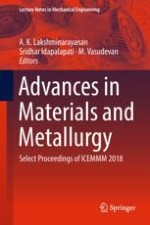2019 | OriginalPaper | Chapter
Mechanical Characterization and Robustness of Self-compacting Concrete with Quarry Dust Waste and Class-F Fly Ash as Fillers
Authors : B. Mahalingam, P. Sreehari, Srinath Rajagopalan, S. Ramana Gopal, K. Mohammed Haneefa
Published in: Advances in Materials and Metallurgy
Publisher: Springer Singapore
Activate our intelligent search to find suitable subject content or patents.
Select sections of text to find matching patents with Artificial Intelligence. powered by
Select sections of text to find additional relevant content using AI-assisted search. powered by
